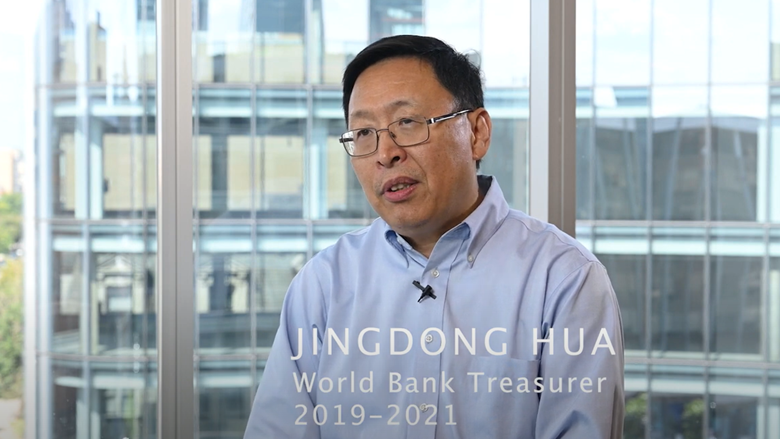1951: First Public Offering Outside the US
1957: First Central Bank Direct Placement
1959: Bank Achieves Triple-A Rating
1951: First Public Offering Outside the U.S.
The Bank’s first public offering outside the United States was a British pound 5 million (US$14 million equivalent at the time) issue executed in London in May, 1951. The bonds had a final maturity of 20 years, with the principal amortizing in years 15 (1966) through 20 (1971). The bonds were sold by a syndicate of banks led by Baring Brothers that also included Hambros, Lazard, Morgan Grenfell, Rothschilds and Shroeders. The Bank returned to the London market again in 1954 and 1960, each time with the same syndicate.
The issue came at a time when an increasing amount of the Bank’s outstanding U.S. dollar bonds were being bought by investors outside the United States. According to the Bank’s 1951 Annual Report, by June 31, 1951 approximately US$39 million of the Bank’s dollar bonds (roughly 12% of the total amount outstanding) were held by non-U.S. investors, including by ten central banks.
At the time of the U.K. public offering, there were Bank loans outstanding to 21 different countries – eight in Europe, seven in Latin America, and two each in MENA, Africa and Asia.
1957: First Central Bank Direct Placement
The Swiss Central Bank purchased a Swiss franc-denominated direct placement (US$ 47 million equivalent at the time) in January, 1957. According the Bank’s FY57 Annual Report, this was recognized as an “innovation in the Bank’s methods of raising money.”
This first private placement was quickly followed by three private placements to the German Bundesbank in US$ and Deutsche mark (for a total of approximately US$145 million). By the end of FY60, the Bank had executed more ten direct placements with the Bundesbank.
Over the next several decades, central bank private placements became an increasingly important part of the Bank’s funding program, reaching an annual peak of 80% of the Bank’s total funding program in 1974 (for an amount of US$1.47 billion), followed by 76% in 1975 (for a total of US$2.65 billion). The German Bundesbank and the Bank of Japan were the largest central bank direct lenders to the Bank. The Bank also borrowed in 1974 and 1975 from the governments of Iran, Abu Dhabi, Libya, Saudi Arabia, Nigeria, Venezuela and Oman, highlighting the high reserve levels of petroleum exporting countries in those years.
1959: Bank Achieve Triple-A Rating
The Bank’s first bond issue in 1947 was rated AA by Fitch Ratings and A by Standard & Poor’s. Moody’s was also in existence in 1947, but at that time it was not rating financial institutions. Moody’s made its first exception to this policy for the Bank in 1950 and rated the Bank single-A.
Bank management was very aware of the importance of the Bank having a low funding cost and pressed the rating agencies, throughout the 1950’s, to increase the Bank’s ratings. In 1951, Bank President Meyer wrote that Moody’s reluctance to increase its rating on the Bank resulted from “a disposition to be ultra-conservative on anything labeled ‘international’.”
In 1958, the credit rating agencies warned the Bank that its ratings may be in jeopardy since the amount of its outstanding bonds was approaching the US share of the callable capital. In response, the Bank rapidly mobilized a capital increase. On September 15, 1959, the Bank’s Board of Governors approved a capital increase (that doubled the callable capital but did not include any additional paid-in capital). Later that same month, the rating agencies all upgraded the Bank to triple-A.



































